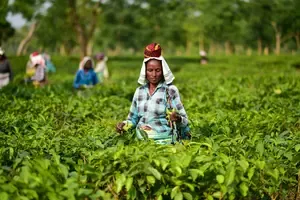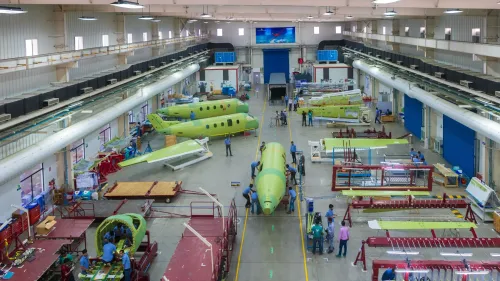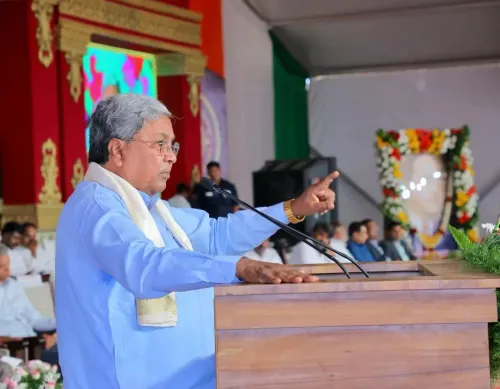Have India's tea exports grown by 2.85% to exceed 257 million kg in 2024-25?

Synopsis
Key Takeaways
- India's tea exports increased by 2.85% in 2024-25.
- North India experienced an 8.15% rise in exports.
- Export value rose to Rs 290.97 per kilogram.
- India is among the top 5 tea exporters globally.
- Small tea growers contribute 52% of total production.
New Delhi, July 20 (NationPress) India's tea exports have experienced an impressive increase of 2.85 per cent in the financial year 2024-25 compared to the previous fiscal year, demonstrating a continued strong demand for the nation's premium tea products, as per data shared by the Tea Board.
The total volume of tea exports has risen from 250.73 million kilograms to 257.88 million kilograms, according to the statistics.
North India has seen a remarkable boost in shipments, with the region achieving an 8.15 per cent increase in exports, totaling 161.20 million kilograms in 2024-25, compared to 149.05 million kilograms in 2023-24.
The export value per kilogram of tea also surged to Rs 290.97, which is a significant 12.65 per cent rise from Rs 258.30 during the fiscal year 2023-24, resulting in better financial returns.
For the calendar year from January to December 2024, tea exports reached 256.17 million kilograms, marking a substantial 10.57 per cent increase compared to the same timeframe in the previous year.
In 2024, North India's exports were recorded at 155.49 million kilograms, while South India contributed 100.68 million kilograms, reflecting increases of 10.28 per cent and 11.02 per cent respectively, according to the data.
India ranks among the top five tea exporters globally, contributing approximately 10 per cent to the total international tea trade. Renowned varieties such as Assam, Darjeeling, and Nilgiri teas are celebrated worldwide. Notably, black tea constitutes around 96 per cent of India's tea exports, with other types including regular tea, green tea, herbal tea, masala tea, and lemon tea.
India's tea is shipped to over 25 nations, with significant markets including the UAE, Iraq, Iran, Russia, the US, and the UK.
The government is implementing various initiatives to enhance tea production, develop a unique brand for Indian tea, and support the welfare of families involved in the tea sector.
The Assam Valley and Cachar in Assam are key tea-producing areas, while West Bengal is known for its major regions like Dooars, Terai, and Darjeeling. The southern states, particularly Tamil Nadu, Kerala, and Karnataka, contribute around 17 per cent of the national output.
Small tea producers are a growing segment, accounting for nearly 52 per cent of total production, with approximately 2.30 lakh small tea growers involved in the supply chain.
The Union Government, through the Tea Board, has undertaken various measures to support this group. These include establishing 352 Self Help Groups (SHGs), 440 Farmer Producer Organisations (FPOs), and 17 Farmer Producer Companies (FPCs).
Interactions with small tea growers focus on quality plucking, capacity building, and crop management. Additionally, assistance has been provided for the purchase of pruning machines and mechanical harvesters.
Mini tea factories have been set up to encourage entrepreneurship and provide opportunities for unemployed youth.
The Indian tea industry directly employs 1.16 million workers, with an equivalent number engaged indirectly.










